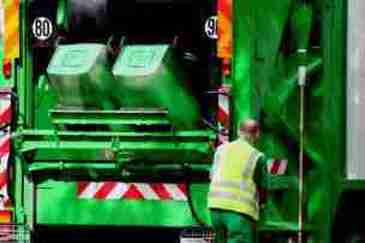Use of Man-Riding Foot-Boards on Refuse Collection Vehicles (R.C.V)
 | The purpose of this alert is to inform employers and employees about the significant risks associated with the use of Man-riding footboards on Refuse Collection Vehicles (RCV’s). Where footboards on RCV's are not compliant with the requirements of the Irish Standard IS EN1501-1:1998+A2:2009 this may compromise the safety of employees using them. After considering the available alternative options the HSA encourages employers against the use of man-riding footboards on refuse collection vehicles due to the significant risks that arise. Where an employer decides to continue with the use of Man-riding footboards then Irish Standard IS EN1501-1:1998+A2:2009 applies |
Background
The European Standard (IS EN1501-1:1998+A2:2009) relating to refuse collection vehicles and their lifting devices specifies minimum standards for man-riding footboards including:-
- The minimum dimensions for the footboard,
- The provision of grab-handles,
- The automatic detection of a person riding on the plate and associated speed and reversing restrictions and emergency over-ride features.
For further information please refer to Irish Standard IS EN1501-1:1998+A2:2009.
Action to be taken
If you intend to use or continue using RCV’s with man-riding footboards then you must ensure that:-
1. All Footboards:
- Meet the dimension requirements of EN1501-1 (and that grab handles are provided in line with these dimensions)
- Are constructed of non-slip grid iron so that dirt, snow and ice can pass easily through
- Have edges and corners that are rounded sufficiently
- Have a flat surface
- Are located within the vehicles width
2. All occupied footboards have automatic safety features to detect the presence of a person on the footboard in line with IS EN1501-1:1998+A2:2009. These safety features should restrict compacting as necessary, forward speed to 30km/hr, any reversing, and deceleration. There should be an emergency over-ride to these automatic features in line with IS EN1501-1:1998+A2:2009.
3. Regular checks of vehicles are carried out to ensure that automatic safety features have not been damaged or over-ridden. So far as is reasonably practicable, you should ensure that these safety features cannot be easily rendered inoperative or disabled.
4. The risk assessment must consider other risk-factors associated with the vehicle route and its operation, to include, but not limited to:
- Road condition
- Speed-bumps
- Impact on and behaviour of other road users
- Impact on pedestrian [particularly children and elderly
- Activities congested and/or residential areas
- Speed of other road-users
- Over-hanging trees
- Provision of personal protective equipment to employees.
5. The driver of the vehicle and any additional operator(s) are given appropriate training to ensure that they are aware of, the hazards and risk associated with the use and operation of RCV’s and the appropriate control measures necessary to eliminate/reduce the risks.
6.The driver and or operator are competent to carry out the necessary routine checks to ensure the safe use of the vehicle and that all safety control devices are in good working order.
Relevant References
The Safety, Health and Welfare at Work Act 2005: Schedule 3
Safety, Health and Welfare at Work (General Application) Regulations 2007
Irish Standard I.S. EN 1501-1:1998+A2:2009: Refuse collection vehicles and their associated lifting devices – General requirements and safety requirements - Part 1: Rear-end loaded refuse collection vehicles
